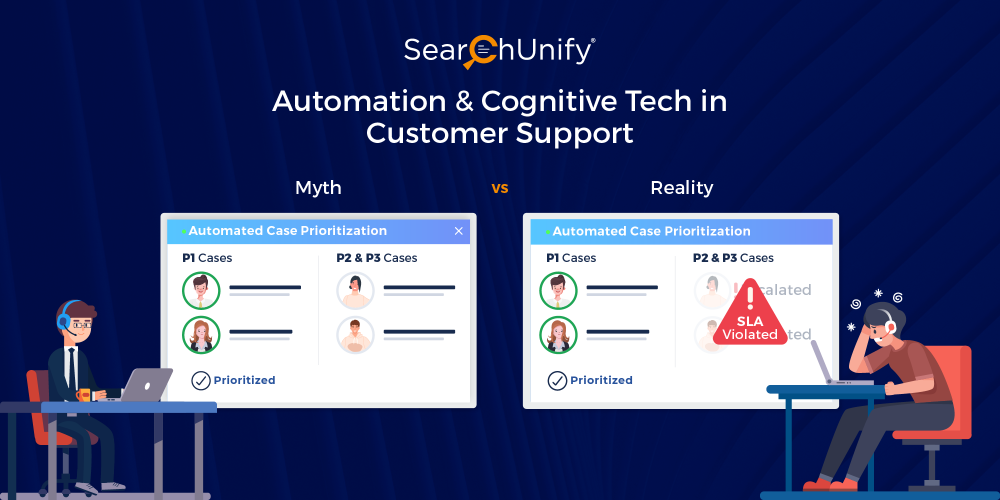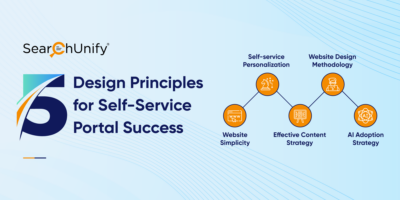
MarketsandMarkets Research opines that the global automation market will grow to a whopping $12.61 billion by 2023.
Enterprises are investing in multiple technologies to tackle mounting challenges floating in the global marketplace. Automation, artificial intelligence, & cognitive technology have been the hottest areas of investment, especially over the past decade. However, many use these terms interchangeably. It is paramount to know how these terms differ to understand what they bring to the table.
Automation is an application of technology that follows pre-programmed ‘rules.’
Artificial intelligence (AI) is designed to simulate (and preferably supersede) human thinking.
Cognitive technology leverages AI to identify patterns, extract insights, and find growth opportunities which, in a way, makes it the evolved version of AI.
Let me explain with an example. Imagine you have to work on invoices. With automated systems, you can carry out routine tasks based on your commands and rules, such as sending invoices on a specific day or time. But cognitive technology extracts additional data to highlight who did or did not receive the invoice, when they are due, and which ones are past the grace period. It helps optimize order and credit management based on customer behavior. Got clarity, right?
Today, there are a plethora of myths or misconceptions that are attached to automation and cognitive technology. In this blog post, we’re going to debunk the common ones and separate facts from fiction.
Myth #1: Automated Customer Service is a Recipe for Disaster
To brief, customer service automation is a process that reduces human involvement in solving customer inquiries using self-service channels, automated e-mails, automatic ticket routing, proactive messaging, FAQs, or simulated chat conversations. As Forbes contributor Brad Birnbaum says, support automation “helps to streamline the ever-increasing volume of interactions across touchpoints and minimizes the need to boost agent headcount.”
However, many enterprises believe that fully automated customer service does more harm than good. Let’s say a customer is facing an identity theft issue with their bank account. Can you imagine their plight as the polite chatbot constantly derails because of colloquialism, synonyms, misused words, or slang while the hacker continues to (literally) cash in on the opportunity?
Luckily, the second wave of chatbots is here with cognitive technology at its helm. These chatbots leverage machine learning and natural language processing to continuously learn and evolve with every interaction. And if the customer dealing with identity theft was to approach them, the bot would not waste a moment and pass the baton to a seasoned service rep. This way, you get the best of both worlds.
Myth #2: Automated Customer Service Threatens Service Agent Jobs
World Economic Forum (WEF) predicts that the rise in machines and automation will create a whopping 58 million new jobs by 2022.
While nothing can quite replace the human touch, many still feel threatened by automated customer service. The panic is based on the notion that human agents will be replaced by automated systems and cognitive technology. However, this is not true.
The reality is that 70% of service agents believe automating routine tasks would allow them to focus on high-value work, like offering empathetic, informed, and personalized service. It has been observed that most of the tickets span the same set of issues. With cognitive tech in place, agents can work on high-impact, high-touch tickets while the system tackles the low effort and recurring tasks for them.
In the case of complex customer tickets, it acts as an agent assistant by providing granular reports and alerts – such as customer intent, emotional undertones, actionable insights, etc. – to paint a clearer picture in front of agents. This allows your support mavens to make faster, more informed decisions. Hence, people and cognitive technology are complementary. The future is not 100% automation; it is cognitive tech + human collaboration.
Myth #3: Automated Customer Service is Expensive and Tanks Brand Reputation
According to McKinsey, businesses that use technology, like automation, to revamp their customer experience can save up to 40% on service costs.
No one has a customer service crystal ball, but while there have been many large-scale automated customer service successes, we also have quite a few costly failures. How come, you may ask? Well, the reason is poor implementation of technology.
Many enterprises fall prey to the hype. However, technology needs will differ for different companies. They must look at automated customer service through the lens of business objectives and results rather than technologies. Additionally, it is always better to create a business case before investing in technology.
The next step is to choose the right vendor. No matter what type of enterprise you lead, you will rely on the vendor’s expertise to steer your ship the right way. Understandably, there will be a plethora of vendors to choose from. This post will help you pick the right vendor for your enterprise.
Cognitive Tech: Taking Your Customer Service Game by Storm
PwC projects that AI will contribute up to $15.7 trillion to the global economy in 2030.
As we’ve debunked the common myths or misconceptions about automation and cognitive technology, it is important to shed a light on how cognitive technology is ushering in the next wave of transformation. Let’s jump right into it.
1. Contextual Predictions
Today’s tech-savvy customers reach you through multiple channels every day. Every interaction contributes to massive, cloud-based repositories known as data lakes. However, these big data lakes need to be put for better use to excel in customer service. But how? Predictive analytics is the answer.
Several businesses are harnessing predictive analytics with the help of cognitive tech. It gives companies the freedom to get a step ahead of the competition and create unforgettable experiences for their audiences.
It analyzes historical data, tracks purchase patterns, extracts intent from search data, and monitors customer behavior. Then, it prepares an in-depth report that allows the service agent to act in real-time. This enhances the customer experience by leaps and bounds.
2. Hyper-personalization
63% of customers will stop buying from brands that use poor personalization tactics.
With customer service becoming a huge competitive differentiator, it’s no longer enough to deliver decent experiences to delight this evolved breed of customers. Today’s customers expect an increasing level of personalization and will prefer brands that cater to their specific needs. Creating hyper-personalized CX can light up your business like the fourth of July.
Cognitive technology can help you with that! It is driven by cutting-edge artificial intelligence that can make your hyper-personalization strategy a tour de force. It allows you to unify all the channels, capture insights, and transform them into customized recommendations for every individual user. It also leverages NLU to enable intent detection for the searched queries and surface the most relevant results.
3. Real-time Analytics
Real-time Analytics has become vita in the customer service world. Instead of manually cobbling together the best guesses based on historical events, enterprises rely on data-driven insights, such as content gap reports, case deflections, conversion ratio, etc., to uncover hidden patterns and make calculated decisions.
The reason? It helps you to track the customer journey and predict their next step. This information keeps the agents on the pulse to personalize customer interactions, which automatically strengthens your relationships with them.
4. Conversational AI Assistants
MarketsandMarkets revealed that the global conversational AI market size is expected to grow up to a whopping USD 13.9 billion by 2025.
Conversational AI is taking the long-term CX strategies by storm. By leveraging AI capabilities like NLP and ML, it can decipher the context and intent of the query based on customer history and pattern. Then, it uses dynamic decision tree technology to ask step-by-step questions and successfully resolve the query in a conversational format.
Conversational AI is upping the game. Its intuitive UI also simplifies the process by enabling customers to create a case or discussion right from the chat window. In addition to that, it reports frequently used intents, utterance hit count, and save chat transcripts to help evaluate and optimize chatbot performance.
Want to Make Customer Service Your Forte?
Customer service is indispensable for the sustained growth of any enterprise. However, it needs to get rid of traditional processes, models, and technologies. The case-first model is one such vintage approach. It takes a toll on agent productivity and the organization’s performance. This is why we collaborated with Klever Insights for an exclusive webinar on why customer support teams need to move from case-first to knowledge-first and how they can make this transition simple and sustainable. Tune into the webinar today!


















